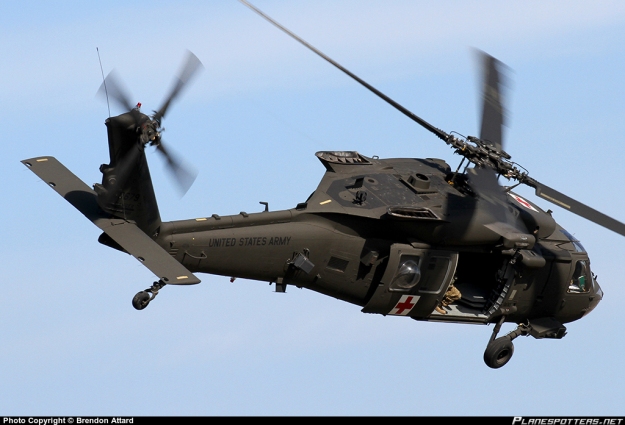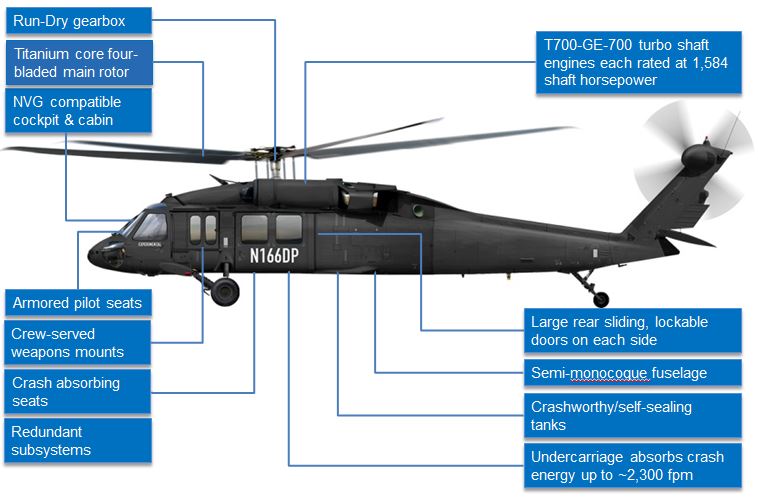Safety First: Essential Steps in UH 60 Helicopter Upkeep
Safety First: Essential Steps in UH 60 Helicopter Upkeep
Blog Article
Navigating Uh 60 Helicopter Regulations and Compliance Requirements

Regulatory Framework Summary
The regulative framework regulating UH-60 helicopter operations includes a complicated set of requirements and guidelines established by air travel authorities. These policies are developed to ensure the safe and efficient procedure of UH-60 helicopters in numerous settings. The Federal Aeronautics Management (FAA) plays a central function in developing and enforcing these laws, which cover a wide variety of operational facets, consisting of airworthiness standards, pilot qualifications, upkeep demands, and operational treatments.
Compliance with these regulations is crucial for helicopter drivers to maintain the highest degree of security and functional stability. Failure to stick to these regulations can lead to severe effects, including mishaps, injuries, and regulative sanctions. Helicopter drivers must remain educated regarding the most recent regulatory growths and guarantee that their procedures are in full conformity with all applicable guidelines and criteria.
Airworthiness Inspections and regulations
In the middle of the governing structure governing UH-60 helicopter operations, a vital emphasis rests on conformity with Airworthiness Directives and performing thorough evaluations to support security requirements and functional dependability. Airworthiness Regulations (Advertisements) are provided by air travel authorities to attend to dangerous problems in airplane, consisting of the UH-60 helicopter, and mandate details actions to be taken by operators or proprietors. Conformity with ADs is necessary, and failure to stick to these instructions can result in serious consequences, consisting of grounding of the airplane.
Routine assessments are vital to making sure the airworthiness of UH-60 helicopters. These assessments encompass a variety of checks, from regular everyday evaluations conducted by pilots prior to and after trips to much more extensive scheduled upkeep evaluations performed by accredited auto mechanics. Additionally, unique assessments may be called for based upon specific problems or incidents. By adhering to a stringent evaluation routine, drivers can detect and resolve prospective issues without delay, consequently enhancing the safety and security and reliability of UH-60 helicopter procedures.
Pilot Credentials and Training

Pilot training for UH-60 helicopters is detailed and covers a variety of subjects, including airplane systems, emergency treatments, navigation, and mission-specific training. In addition, pilots go through simulator training to exercise different emergency circumstances in a controlled atmosphere. This training helps pilots create the needed skills to manage challenging circumstances effectively.


In addition, continuous training and specialist growth are vital for UH-60 pilots to stay current with the newest policies, technology, and best techniques. By spending in pilot credentials and training, drivers can improve security, optimize efficiency, and make certain conformity with regulative requirements in the procedure of UH-60 helicopters.
Functional Limitations and Demands
Pilot credentials and training function as the foundation for recognizing the functional restrictions and requirements linked with UH-60 helicopter procedures (uh 60). These operational constraints are implemented to make certain the security of the crew, passengers, and the airplane itself. Operational limitations might include variables such as climate condition, weight constraints, altitude restraints, and functional boundaries. It is critical for pilots to be fluent in these restrictions to make enlightened decisions throughout flight procedures. Furthermore, conformity requirements, such as sticking to particular trip paths, interaction procedures, and emergency treatments, are essential for keeping operational security and regulatory compliance. Pilots have to stay existing with all operational restrictions and needs with regular training, rundowns, and assesses to reduce threats and ensure risk-free and reliable UH-60 helicopter procedures. By prioritizing adherence to these operational standards, pilots can enhance the general safety and security and effectiveness of their objectives while promoting regulatory requirements.
Emergency Procedures and Compliance Testing
Effective emergency treatments and thorough conformity screening are vital elements of preserving operational safety and regulatory adherence in UH-60 helicopter procedures. Emergency situation treatments include protocols for various circumstances, consisting view it of engine failings, fires, hydraulic concerns, and more. Pilots and crew participants need to be skilled in these procedures to respond promptly and successfully in emergencies. Regular conformity screening guarantees that the helicopter meets all regulative demands stated by air travel authorities. This screening involves complete examinations, checks, and analyses to verify that the aircraft is airworthy and in compliance with all appropriate guidelines.
Compliance testing likewise extends to devices onboard the UH-60, such as interaction systems, navigation tools, and security gear. Guaranteeing that all equipment is operating web appropriately and fulfills governing criteria is essential for secure operations. Furthermore, conformity testing might involve simulations of emergency situations to examine the staff's response and the helicopter's efficiency under anxiety. By focusing on emergency procedures and compliance testing, UH-60 drivers can reduce threats and show their dedication to safety and security and governing conformity.
Conclusion
Finally, adherence to regulative framework, compliance with airworthiness directives, pilot certifications and training, functional limitations, and emergency situation procedures are vital for browsing the regulations and demands of operating a UH-60 helicopter. uh 60. It is important for operators to prioritize safety and security and guarantee complete compliance with all relevant guidelines to keep the airworthiness and operational integrity of the aircraft
Navigating the regulatory landscape surrounding UH-60 helicopter procedures demands a nuanced understanding of the elaborate internet of guidelines and compliance demands.Conformity with these guidelines is necessary for helicopter operators to preserve the highest levels of safety and operational honesty.Amidst the regulative framework governing UH-60 helicopter procedures, an important focus lies on compliance with Airworthiness Directives and carrying out extensive examinations to support security requirements and functional integrity.Efficient emergency treatments and thorough compliance testing are important elements investigate this site of maintaining operational security and governing adherence in UH-60 helicopter operations. Routine conformity screening makes certain that the helicopter fulfills all regulatory needs set forth by aviation authorities.
Report this page